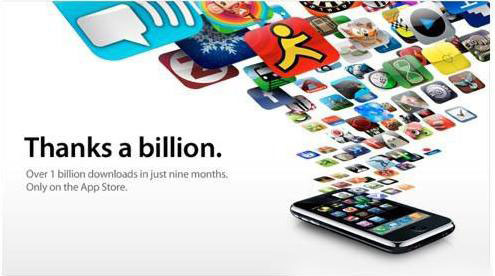 今天,在日本,有450万麦当劳客户使用智能手机。不过,他们可不光是用手机来点餐和支付餐费。现在有了免费的应用程序,客户也可以通过手机客户端接收、下载并储存麦当劳的优惠券。无独有偶,在美国,每天有成千上万的智能机用户只需光临1,300家百思买(BestBuy)中的任意一家分店便可获取积分,扫描并购买商品者,能获得更多积分。
今天,在日本,有450万麦当劳客户使用智能手机。不过,他们可不光是用手机来点餐和支付餐费。现在有了免费的应用程序,客户也可以通过手机客户端接收、下载并储存麦当劳的优惠券。无独有偶,在美国,每天有成千上万的智能机用户只需光临1,300家百思买(BestBuy)中的任意一家分店便可获取积分,扫描并购买商品者,能获得更多积分。
智能手机和GPS技术产业的完美结合,产生了一个新型的数字化服务提供产业,能够迅速诱导客户改变决定。数字化服务提供——可以通过各种在线频道为客户提交服务,比起另一种由商家卖给客户的方法来说,更容易赢得客户并作出关键决定。
为客户和企业提供数字化服务
业内人士表示,手机是人们24小时最亲密的伴侣,所以,一些运营商便利用这一点,搜索并掌握客户的大量私人信息,然后根据不同人群,有针对性的进行推荐服务及消费折扣。
数字化服务提供商的出现,已经大大引起了零售商、信用卡公司、银行、创业公司和电信公司的广泛关注。Google的eWallet服务就是承诺用户,可以通过eWallet在线购物。美国运通(American Express)也同Facebook合作,推出了用Facebook账号使用运通服务的项目。这样一来,便大大提高了美国运通的业绩量,也为Facebook的浏览量添砖加瓦。这就是通过智能手机,诱使消费者产生购买欲望并最终实现过程的典型案例。
尽管当前,数字化服务提供对于智能手机用户来讲尚处萌芽时期,但前景却是一片光明。自2009年以来,线上搜索产品的市占率已达到54%,而使用智能手机使用该服务的则占了52%。就商业而言,数字化服务是连接手机用户的最佳平台。根据最新调查显示,47%的手机用户在收到商家发送的信息之后,会去该店消费。也有40%的用户在收到类似信息之后,会去另一家与之类似的店消费。BIA/Kelsey公司预计截止2013年前,将派发出30亿美元的优惠券。这些趋势将会对条形码阅读、客户行为、CRM技术及电子支付系统等,逐渐瓦解。
零售商能够很轻易的获取消费者何时进店消费的信息,从而快速调整商品结构,得以适应不断变化的消费环境。这为商家提供了一个强大的工具,可以帮助他们真正拥有愉快的客户体验。
正确使用数字化服务提供模式,还可以进入强大的客户信息资料库,了解客户消费喜好以及生活方式偏好。成千上万的消费者可以通过智能手机查询商品信息,而商家也可以发掘并传送合适的优惠信息。
预备不确定性
这涉及到企业资源管理,尤其是对“大数据库”的管理,在正确的客户在正确的时间得到正确的服务。这也意味着,投资CRM数据库实时处理信息的工作需要速度高效的分析师,而不需要你自己做,调整战略战术及报价亦然。现实中,一些金融服务公司已经提供这样的服务了,比如对客商、签证等。举例说明,Gap(美国著名服装零售店)通过该数字在线系统,可以很精确的了解到顾客所在位置。正如线上零售商可以根据顾客的商品搜索历史,来了解客户的商品需求,从而置顶相关营销建议及其他改进计划。消费者一旦使用信用卡账户加该计划,便能够实时了解所在地附近的商户信息。
传统零售商适应于电子商务的形式,但是他们现在更需要一个移动客户端上的新平台。
Today, 4.5 million McDonald’s customers in Japan use smartphones. And they don’t just use them to order and pay for meals. Thanks to a free app, they also receive, store, and redeem McDonald’s coupons. Meanwhile, in the U.S., thousands of smartphone users are earning reward points every time they enter one of 1,300 BestBuy stores. And they earn even more by scanning or purchasing products.
The merging of smartphone and GPS technology has birthed a digital offers industry that is rapidly altering the customer decision journey. Digital offers – purchase incentives that can be delivered to customers through a variety of online channels – are more than another way for businesses to sell to their customers. They are becoming a critical linchpin in the battle that businesses are waging to win the customer decision journey.
The digital offer promise for customers and companies
“The mobile phone is a device people have with them literally 24/7,” said Jack Stephenson, head of mobile marketing and e-commerce for JPMorgan Chase, in a recent interview with David Edelman. “It has your contact information and a lot of personal stuff on it. Stores could offer you discounts exactly when you want to use them.”
The promise of digital offers has set off a stampede of interest as retailers, credit card companies, banks, start-ups, and telecoms companies look to cash in. Google’s eWallet wants to deliver on the long-expected promise of using your smart phone to make purchases. American Express has linked deals on Facebook to its card, allowing people with both accounts to get deals from select merchants and redeem them by just using their Amex card. Meanwhile start-ups like Shopkick, a mobile app that provides customers with offers and rewards when they walk into a store, and Groupon Now, the mobile version of the social shopping service, are creating a cacophony of digital offer options on-the-go through the smartphone.
Though digital offers delivered to mobile devices are in their infancy, the trends are promising. Customer product research on mobile phones is up 54 percent since 2009 while some 52 percent of customers use smart phones in store to check prices at other venues. For merchants, digital offers are a way to connect with the mobile customer. According to our recent research, after receiving a text message offer from a store, 47 percent of customers went to a sale they would not have otherwise gone to. Some 40 percent who received a similar message went to a different store from the one they were in. BIA/Kelsey expects about $3 billion worth of digital coupons to be redeemed by 2013. These trends are only going to continue as barriers to adoption – bar code reading capabilities, customer behavior, CRM technologies, and trust in e-payment technologies – crumble.
Retailers see the ability to easily reach consumers when and where they shop, and to rapidly adjust offers to accommodate changing circumstances. All this gives marketers a powerful tool that can help them to truly own the customer experience.
Getting the digital offer model right also opens a treasure trove of customer data. For some time retailers, service providers, card companies, and others have been amassing vast datasets of information about consumers’ purchasing preferences and lifestyle choices. Combine that with millions of consumers who also store purchase and related information on their smartphones. Savvy sellers can now tap that rich data lode to develop and deliver precisely targeted digital incentives.
Preparing amidst the uncertainty
All this activity has created an understandable sense of uncertainty. Companies are experimenting judiciously but don’t want to get caught on the betamax tape side of the digital offer technology shake-out. But retailers need to start preparing now to be in a position to benefit from the rising tide of digital offers no matter how the offer delivery platform evolves.
Develop the resources needed to manage, analyze, and use “big data” so that you’re able to make the right offer to the right customer at the right time. That means investing in real time CRM databases to process information at high speeds and analysts who can make sense of the information to adjust tactics and offers. You don’t have to do this alone. Some financial services firms already offer such services to merchants. Visa, for example, has enabled The Gap to understand a shopper’s physical location, much as online retailers use a consumer’s search history to deliver more relevant marketing offers and other messages. Consumers join this program by enrolling their Visa card for real-time messages about nearby stores.
Coordinate the offers you send through one vendor or channel with the others a customer may encounter. Often in the chase to try out new mobile services, marketers find themselves with disjointed discounts streaming out through many different channels. Companies need to make sure also that their digital offers are targeted to the customers at the right moment of their decision journey. Deliberately think through how the offers you are sending fit together. Do they match what you know about specific customers’ situations? Are the right people seeing the appropriate offer? What offer makes sense of a customer who is considering a purchase vs one that targets a customer who has just made a purchase? To carry this off, you will need to develop a disciplined content supply chain that makes sure the right offers are going through the right channels at the right time.
Upgrade customer service capabilities to effectively handle digital incentive programs. This includes revising guidelines and training for handling customers who try to redeem their offers. Discount guidelines need to be communicated to customer service teams. Companies will also need to have mechanisms in place to communicate back to the marketing team issues and trends they encounter so that offers can be adapted as needed.
“Traditional retailers adapted to e-commerce,” says Stephenson. “They now need to do a similar type of adaptation to mobile commerce.”
 今天,在日本,有450万麦当劳客户使用智能手机。不过,他们可不光是用手机来点餐和支付餐费。现在有了免费的应用程序,客户也可以通过手机客户端接收、下载并储存麦当劳的优惠券。无独有偶,在美国,每天有成千上万的智能机用户只需光临1,300家百思买(BestBuy)中的任意一家分店便可获取积分,扫描并购买商品者,能获得更多积分。
今天,在日本,有450万麦当劳客户使用智能手机。不过,他们可不光是用手机来点餐和支付餐费。现在有了免费的应用程序,客户也可以通过手机客户端接收、下载并储存麦当劳的优惠券。无独有偶,在美国,每天有成千上万的智能机用户只需光临1,300家百思买(BestBuy)中的任意一家分店便可获取积分,扫描并购买商品者,能获得更多积分。
